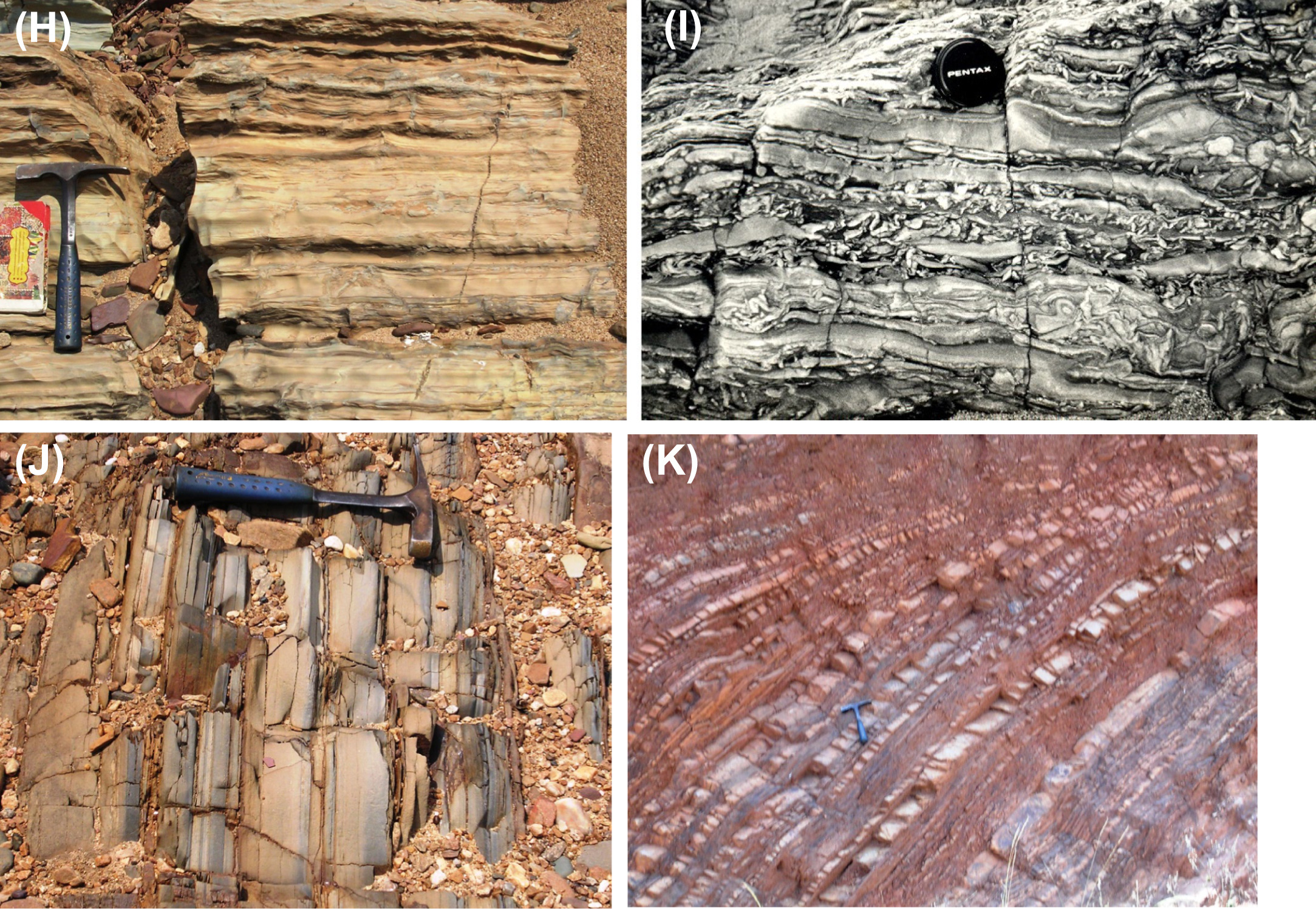Sullavai Gr
Type Locality and Naming
Lithology and Thickness
Sandstone: a lower Encharani Fm and an upper Venkatpur Sandstone Fm. It represents an extensive red sandstone deposit with subordinate conglomerate, practically devoid of any shale or carbonates unlike the older groups.
[Figure: Pranhita-Godavari valley basin Field photographs illustrating lithology and sedimentary structures. (A) Bollapalli Fm - Sandstones. (B) Pandikunta Limestone Fm - Stromatolites. (C) lower part of Mulug Gr - Intercalated conglomerate and sandstone. (D) Rajaram Fm - Limestones. (E) Sullavai Gr Venkatpur Sandstone Fm - Large aeolian cross-strata. (F) Albaka Gr - Cross-stratified sandstone. (G) Somandevara Quartzite Fm - Rippled unit. (H) Bodela Vagu Fm - Laminated lime mudstone. (I) Somnur Fm - Heterolithic sandstone-shale with profuse desiccation crack in-fills. (J) Tarur Nala Fm - Ash beds of Kotturu Somanpalli. (K) Tarur Nala Fm - Graywacke-shale turbidite with cherty intervals. (from Saha et al., 2016)]
Relationships and Distribution
Lower contact
Unconformity onto the Satnala Shale Fm at the top of the Pengnaga Gr
Upper contact
Unconformity; overlain by Gondwana Supergroup (which begins with early Permian glacial Talchir Fm).
GeoJSON
Fossils
Age
Depositional setting
Alluvial fan to braid plain; then desert sand dunes (ergs)
Additional Information

